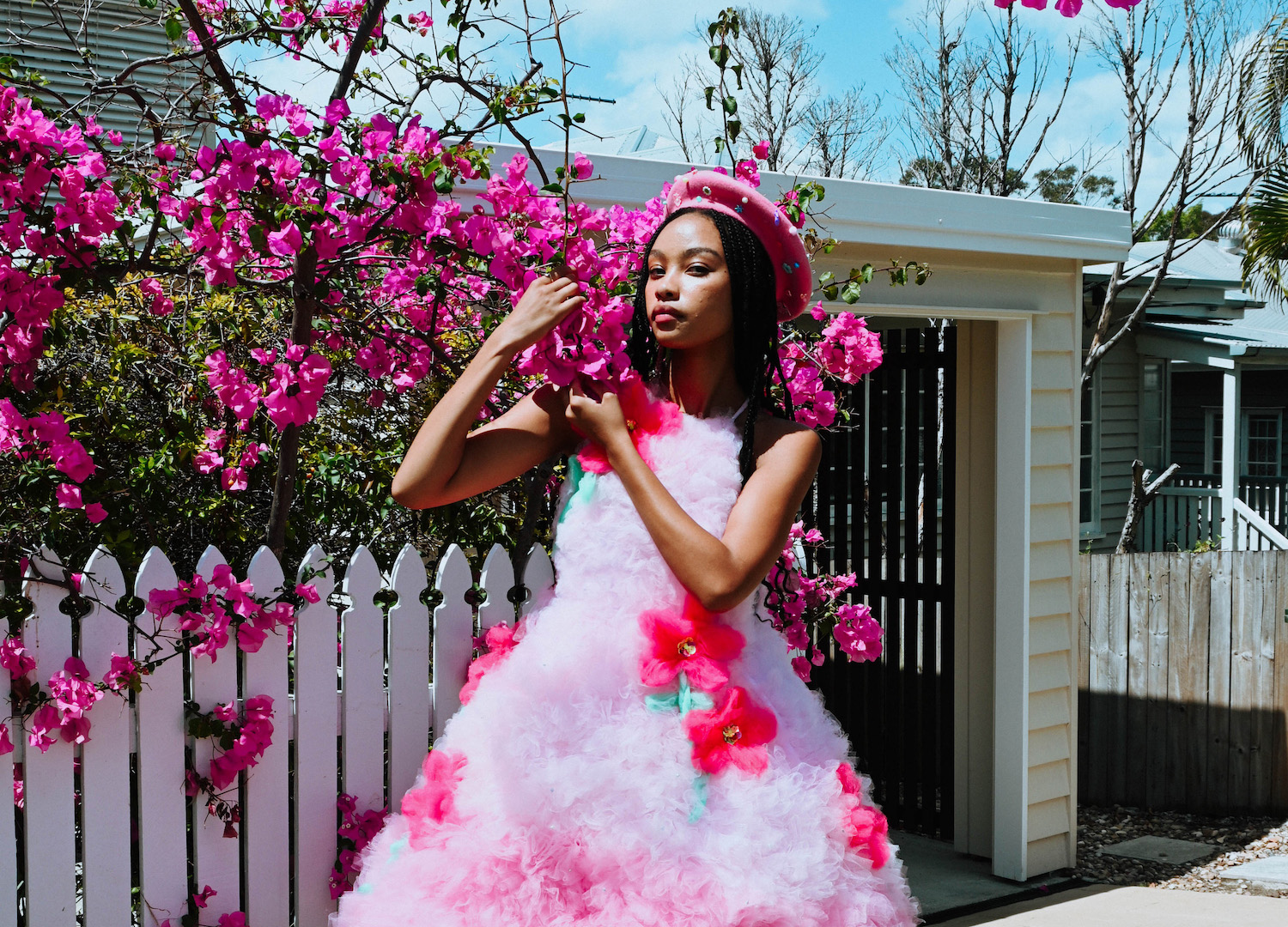
Nice Rack! From Trash to Treasure, Rachel Burke Turns the Tables on Tutus
photos RACHEL BURKE model EBONIE KIBA AT REBEL REBEL
At the risk of stating the obvious, the clothes we wear matter. And not just in the sense of sartorial splendour and self-expression, but for those across the supply chain and beyond working towards a more sustainable fashion future. To celebrate these creatives putting people and planet first, we’ve introduced a digital series called Nice Rack! (…get it) so we can go behind the seams with some of our favourite sustainable brands, together.
If you’ve followed Peppermint for a while, it’ll be no secret that we’re besotted by the one and only Rachel Burke. Having amassed a cool 200,000+ followers on Instagram, the Brisbane-based designer is adored by many for her vibrant and tactile designs, and her inspired use of naive craft materials to transform the mundane into the magical.
It’s because of this transformative alchemy that she has been officially anointed the upcycling queen of our hearts and this magic was on display at this year’s Brisbane Fashion Festival – reimagining the leftovers of an old tutu business into wearable art with a whole lotta heart. A woman of many talents, Rachel recently hit the pavement for some suburban strolling to shoot the capsule collection, featured here in all its blooming glory.
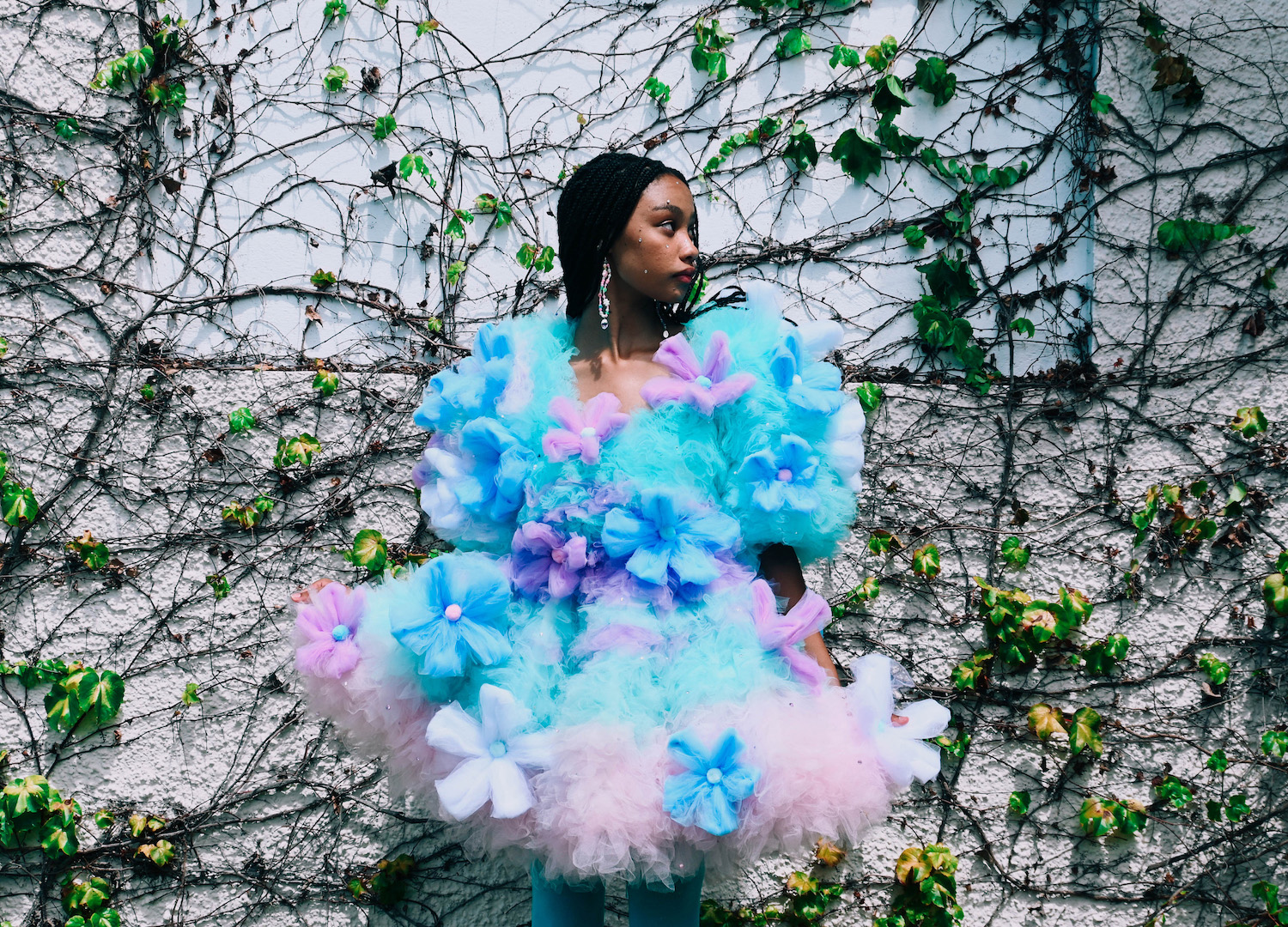
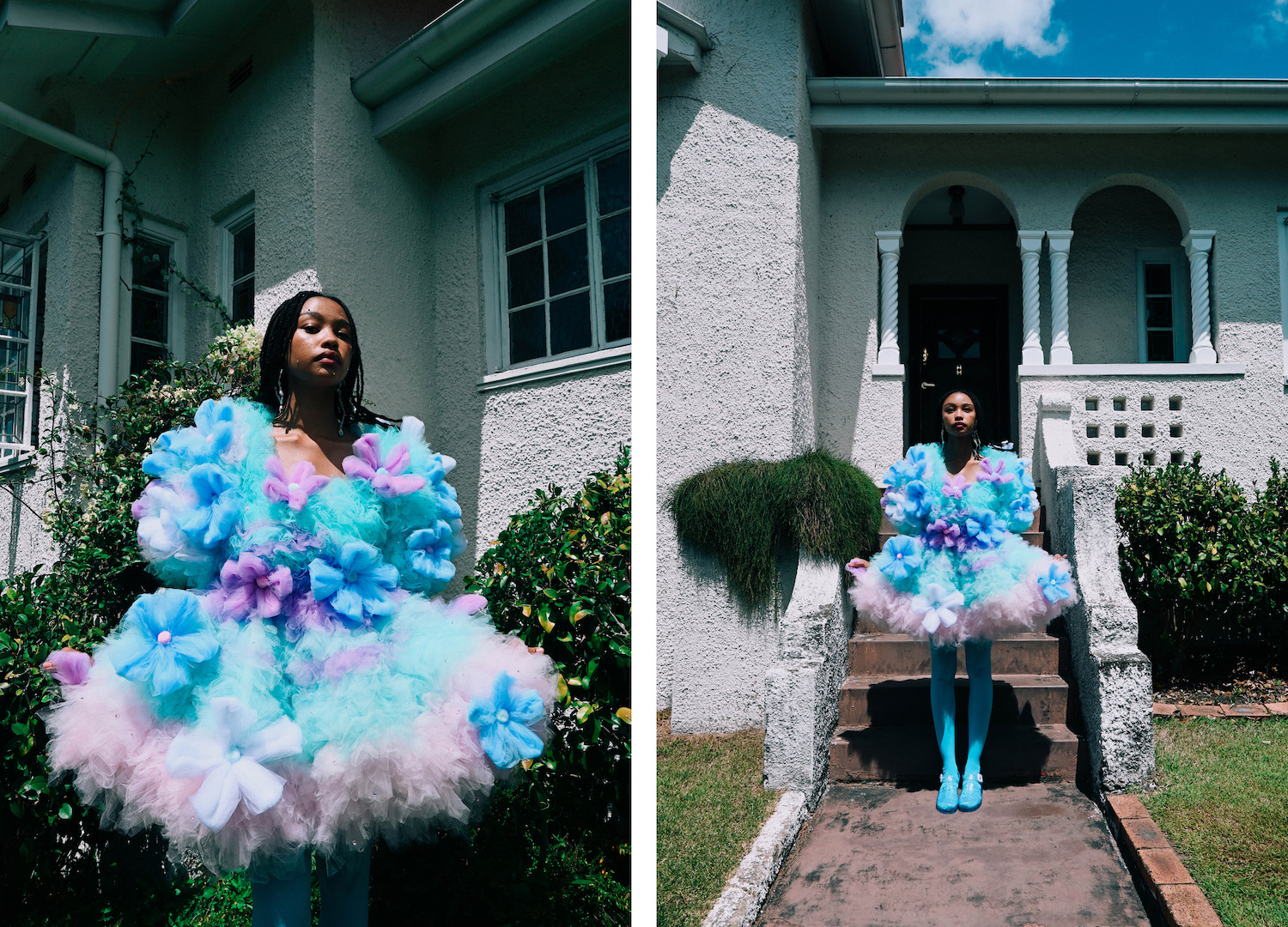

Tell us about yourself…
Hello! I’m Rachel Burke – a multidisciplinary artist and designer based in Brisbane, Australia. I love making wearable art, but also dabble in different modes as well!
What does sustainable fashion mean to you?
To me, sustainable fashion means creating work that utilises upcycling, recycling, deadstock fabrics or materials, or re-working vintage garments to create newness. It’s about cleverly looking at what we already have and finding a way to make something new out of it. It also means manufacturing pieces in an ethical and kind way, free of exploitation. I think there can be a lot of pressure to be a ‘perfectly sustainable’ business when it comes to fashion which can be overwhelming. Instead, I just try to make the best choices I can and make constant adjustments to my techniques and business when it is clear that something needs to change.
Finding and embracing my own style has taken many years, and, at times, has required some courage to really ‘step into’.
How has your style evolved over time?
Finding and embracing my own style has taken many years, and, at times, has required some courage to really ‘step into’. Back in the day, I was honestly too frightened to actually wear my own creations; at first, I was just making things for other people to wear and enjoy. At some point though, I think around the time I quit my day job, something changed and I started experimenting with wearing my garments – embracing the colour, spectacle and excitement that came with wearing something I had made with my own hands.
READ MORE: Nice Rack! First Nations Label Magpie Goose Is Opening a Flagship Store
Why were you inspired to start Imakestagram and what continues to inspire you as a designer?
Imakestagram was always just my Instagram handle because… I like to make things! My Instagram page started from a desire to share the various things I was making (from my parent’s garage). I would never have dreamed at the time that it would evolve to this point! I am continuously inspired by the concept of transformation and making mundane things magical. I can be deeply inspired by the shape of a cereal box or the curve of an empty Milo tin – while some see trash, I honestly see potential! I love the idea of making beautiful things out of materials that might be discarded – I try to integrate this spirit into my making practice as much as possible.
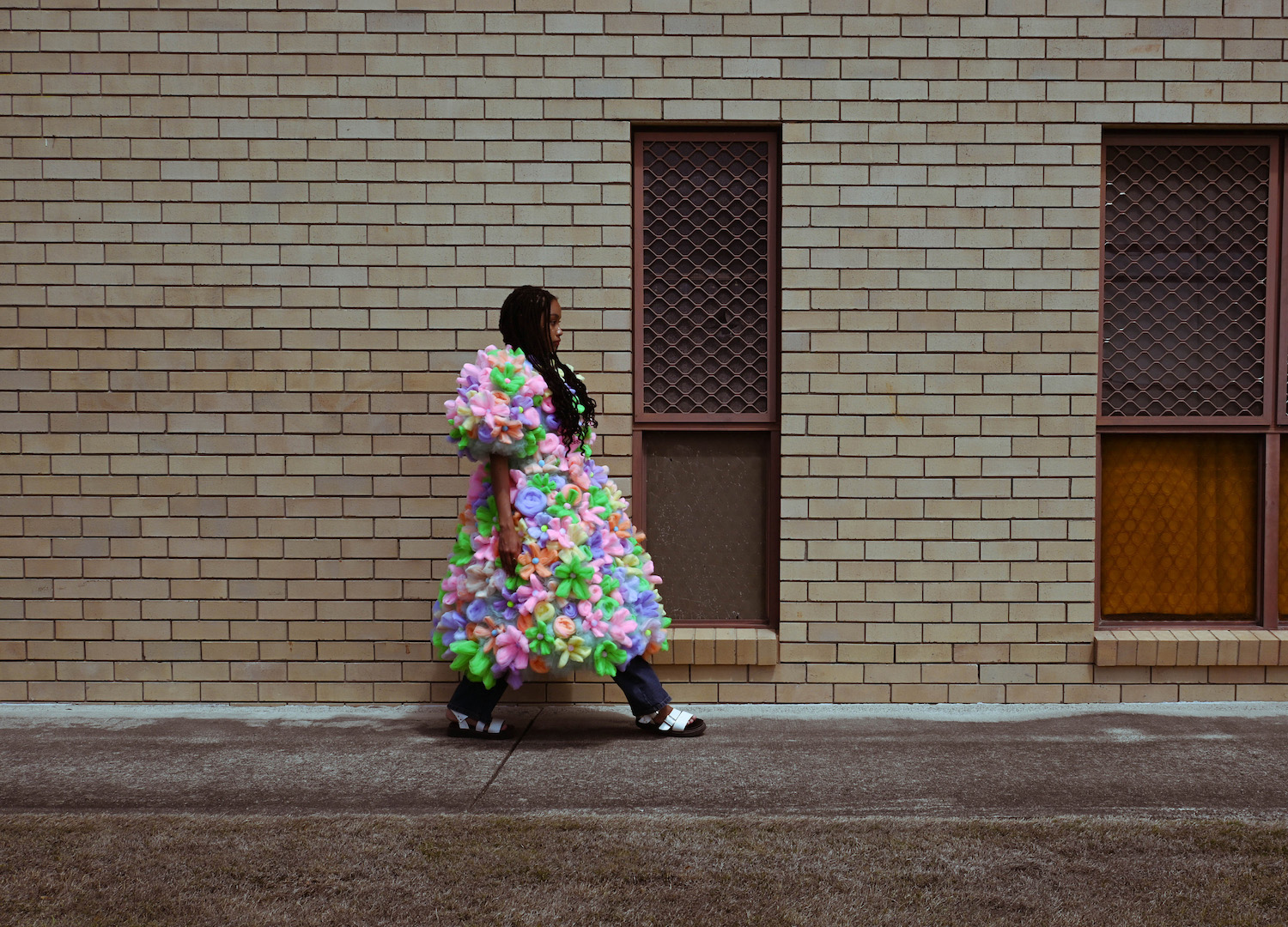
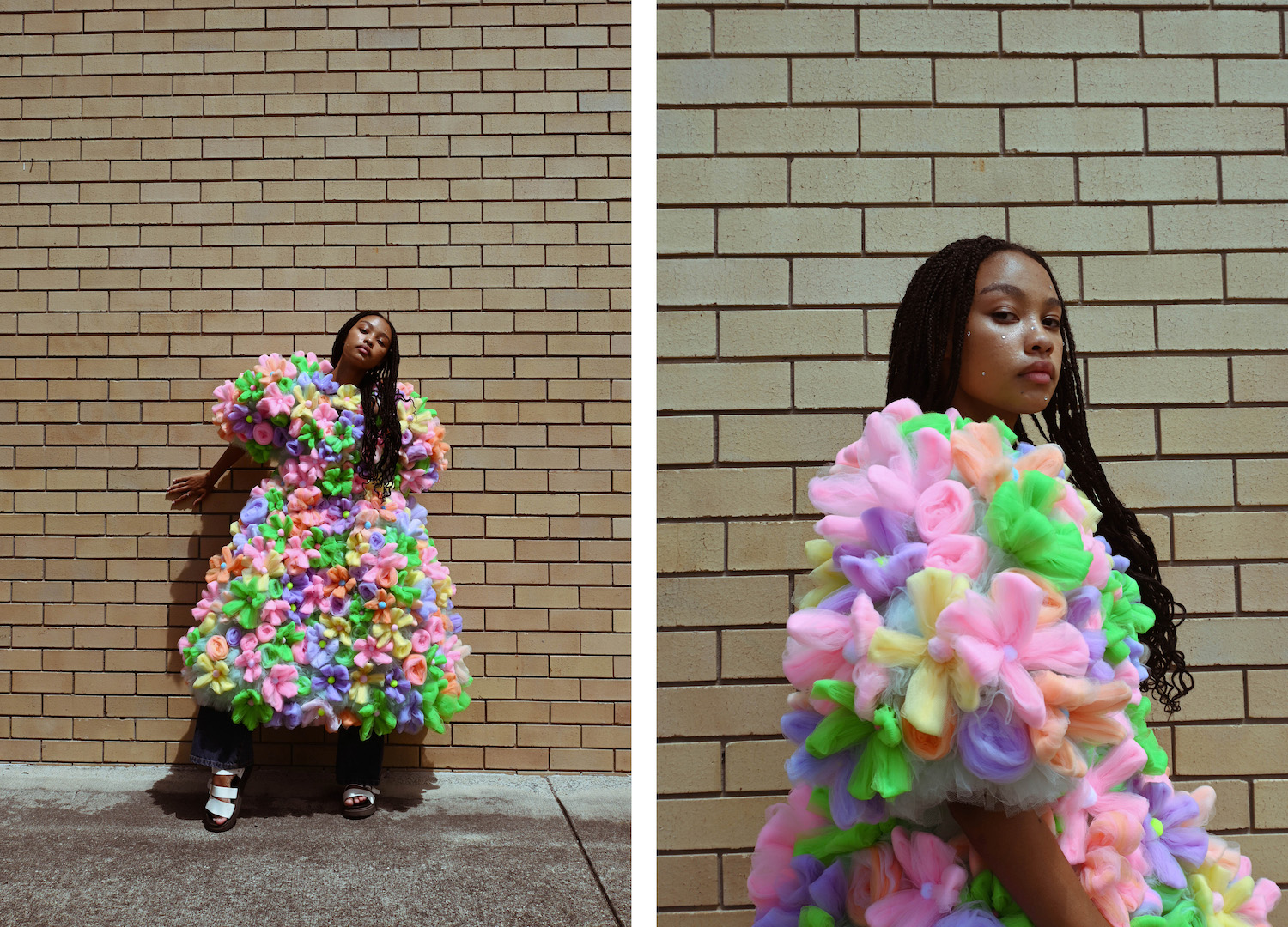
How did you incorporate sustainability/ethical practices within this collection?
A few months ago I was doing an exhibition in Murwillumbah, New South Wales, and was lucky enough to meet a lady who used to have a kid’s tutu-making business. Her business had closed almost seven years ago, and she informed me that she had held onto boxes and boxes of the tulle, ribbons and notions she had used. She offered me a chance to buy the stash and I eagerly accepted!
The stash contained hundreds of tulle rolls. I ruffled them up and sewed them to garment bases that I sourced from local thrift stores in Brisbane. This is one of my favourite things to do – head to an op shop and find a plain-coloured base that would be the perfect canvas for creating something new! A new technique I explored in this range was also creating flowers by hand out of tulle and embroidering them onto the garments. The method resulted in a complete process of transformation for the pieces and I must say I was thrilled with the results – particularly as it meant the capsule was made using nothing new (except the sewing thread).
READ MORE: From Dropout to Tinsel Queen – On the Cutting Edge of Creativity with Rachel Burke
Another way I kept this range sustainable was by keeping things either ‘one-off’ or made-to-order. Keeping things small allows me to ensure that my pieces are ethically made and that my production output is capped by the limitations of my time. I only work with one other local design assistant (Sunday Jemmott), who I have worked with for years, and together we have created a harmonious and enjoyable working environment. There is often a pressure to grow or outsource production as things get more popular, but my heart has always held firm to keeping things small and holding onto those processes that make what we do so special and unique.
I love the idea of making beautiful things out of materials that might be discarded – I try to integrate this spirit into my making practice as much as possible.
What is the most meaningful item in your wardrobe?
Oh, that’s a tricky one! There are many garments in my wardrobe with so many memories attached! A favourite would have to be a light blue linen mini dress with bell sleeves and white embroidery swirls all over it that I wore to my engagement party back in 2014. It was just such a magical day in our front yard, surrounded by friends and I remember feeling very happy in it.
What are your favourite pieces to wear?
I love wearing things that make me feel like a walking expression of my true self. I love colour, volume, texture and sparkle! I adore thrifting and have a fabulous collection of 80s sequinned jumpers and blazers that I love to trot out! I really see outfitting as an opportunity to create a walking composition – styling is truly an art!
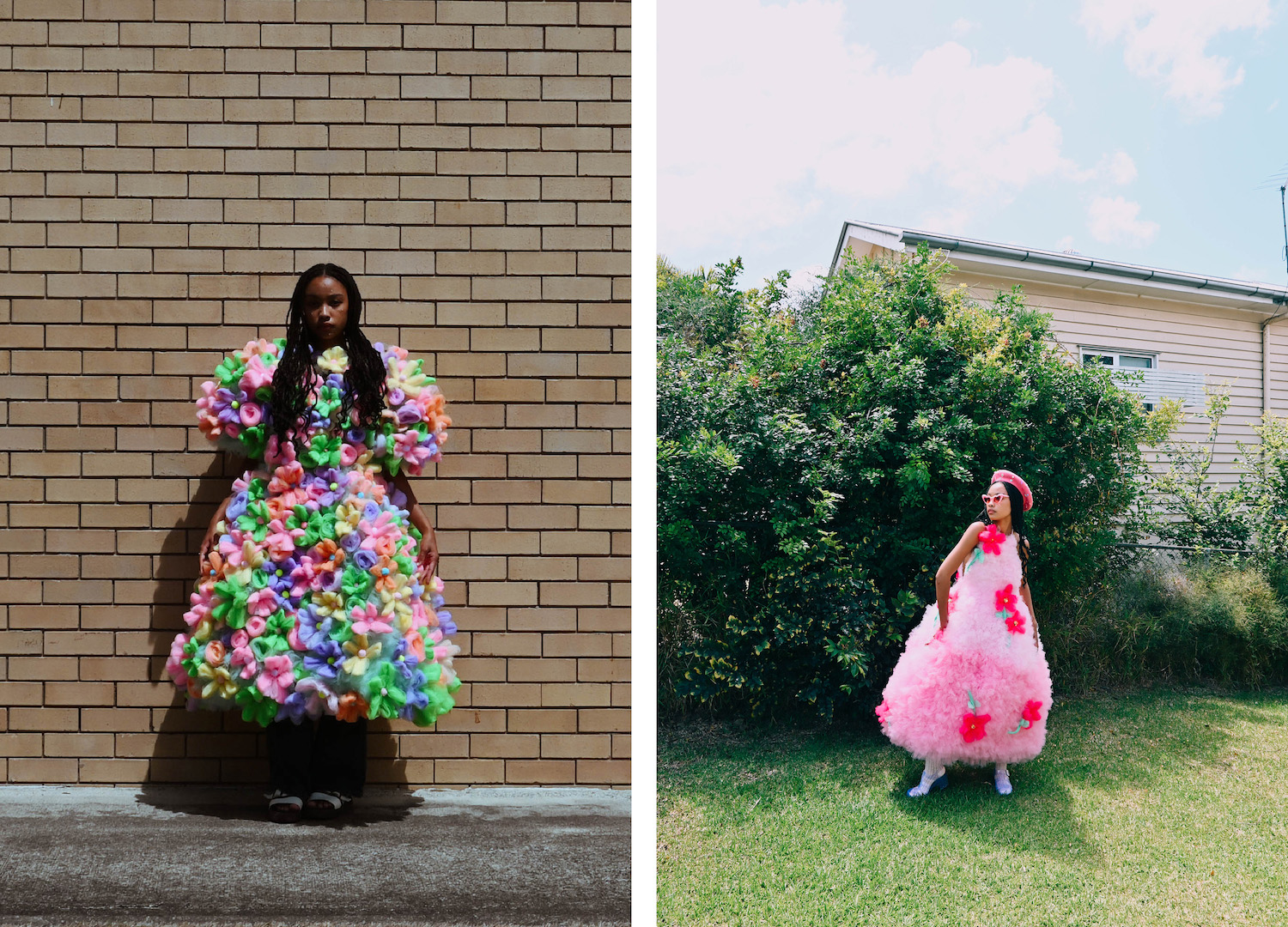

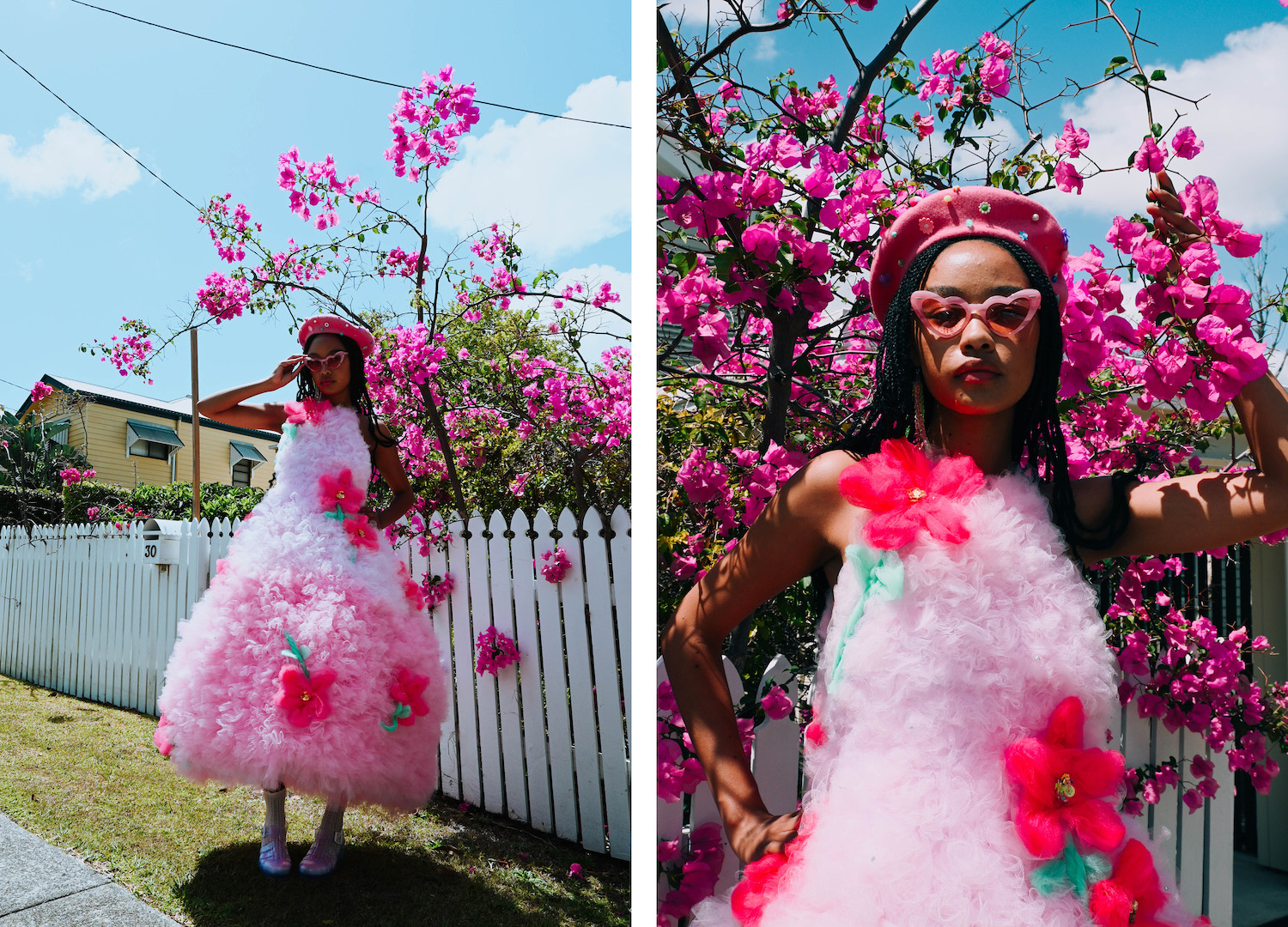
Who are a few of your favourite local designers?
Oh gosh there are a lot! I love my pal Elleni the Label for a cutie beret; Claire Ritchie for some gorgey screenprinted treasures; Gail Sorronda for a drool-worthy party gown; and The Sewloist for an adorable day-to-day outfit!
READ MORE: Nice Rack! Soak Up the Sun With This Sustainable Australian Resort Wear
Where is your favourite place to shop?
Vintage shopping is hands down my favourite mode of shopping so my favourite haunts are Empire Revival in Brisbane and my local Vinnies. If in Melbourne you’ll find me at Retro Star or Savers!
My heart has always held firm to keeping things small and holding onto those processes that make what we do so special and unique.
What do you think needs to change in the Australian fashion landscape?
Gosh, so much really needs to change across the whole industry. I’d love to see brands producing smaller collections and utilising deadstock or vintage materials – making it a goal to use their creativity to come up with innovative solutions that are truly good choices instead of making ‘more and more money’ the only goal. I think Romance Was Born is a great example of innovation in this space. I have loved seeing the label release capsule collections of garments made from old bed sheets, granny blankets and doilies – it’s very inspiring. I’d also love to see the consumer become more empowered by learning their own making, mending and upcycling skills. With this knowledge, people will be more capable of making their own creations, shopping their own existing wardrobes and saving items from landfill instead of just buying new things.


